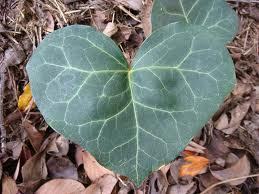This morning, the Telegraph website published a lovely gallery of photos of naturally occurring heart shapes (link below), which demonstrates that there really are hearts everywhere if you look for them. It got me thinking about the heart icon, how our brains scan for it and pattern-match it all the time, and what were the origins of a symbol that has come to mean everything from eternal love to Valentine’s Day.
According to the website heartsymbol.com, in prehistoric times the icon was not even a heart – it was an ivy leaf, which represented eternal love, withstanding death. This makes perfect sense, as the ivy is an evergreen – and also the heart chakra is associated with the colour green rather than red.
We have the medieval tradition of courtly love to thank for the replacement of heart-shaped ivy with the red heart. After that, the circulation of the heart symbol through art, playing cards and above all, through religious worship, has made the heart probably the most popular non-geometric symbol in the world.
Now it means everything from “I like you very much” to “I love you deeply and passionately” and everything in between. It has been commercialised, monetised and animated but still it remains a universal icon of love, passion, compassion, devotion and much more.
To me, the heart symbolises presence. Much of the work I do as a human potential coach is about encouraging people to live from the heart, not the head. Most people can do it immediately with a little guidance, but the real test is being able to stay focused on your heart in the wider world, when you’re surrounded by people who are in their heads all the time.
I need to be reminded to drop my awareness into my heart and be present, so I admit to using little heart stickers in key places as visual cues. There’s one on my laptop, one on my mobile phone, one on my bathroom mirror.
It’s a discreet, personal trigger for me to check whether or not I’m caught up in my thoughts.
It’s a shame, though that we have lost contact with the ivy leaf. I much prefer its connection to nature, to growth, to everlasting love.

Leave a Reply